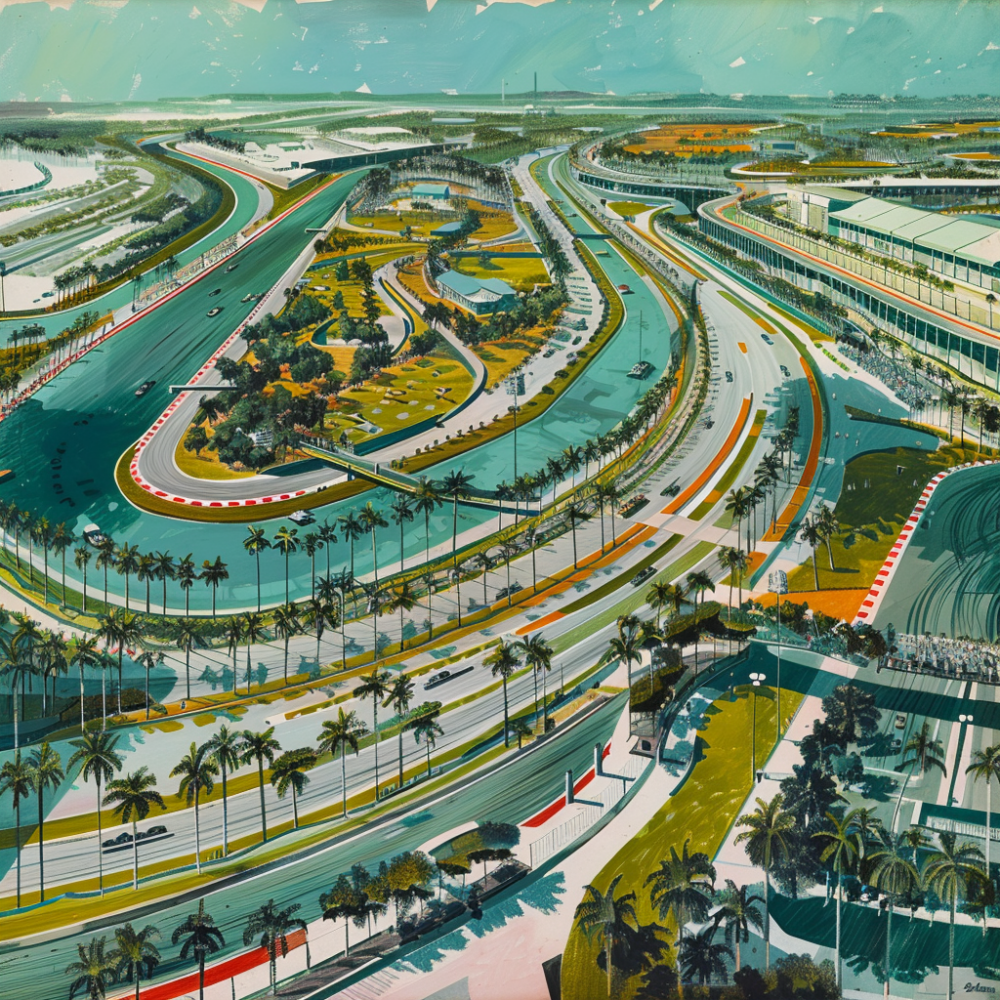The 2024 Formula 1 season marks a historical moment as the longest in its storied history, featuring an unprecedented 24 races across the globe. From its inception in 1950, Formula 1 has evolved from a primarily European series to a worldwide phenomenon, excluding only Africa and Antarctica from its expansive reach. This year’s calendar is a testament to that growth, offering a blend of traditional circuits and modern marvels, from Silverstone and Monza to the neon-lit streets of Miami and Las Vegas, and the prestigious Monaco Grand Prix.
Track Highlights of the 2024 Season

Bahrain International Circuit, Bahrain: Inaugurated in 2004, this desert circuit is known for its long straights and demanding final sector, challenging drivers with abrasive surfaces and unpredictable winds, especially under the dramatic setting of night-time racing since 2014.
Jeddah Corniche Circuit, Saudi Arabia: This coastal track introduced in 2021 boasts a fast, flowing layout with 27 corners, setting the stage for high-speed action and memorable victories by Formula 1 greats.
Melbourne Grand Prix Circuit, Australia: A mix of street and permanent track sections, the Melbourne circuit wraps around Albert Park Lake, offering a mix of speed and challenge since 1996, and the scene of dramatic incidents like Jacques Villeneuve’s 2001 crash.
Suzuka International Racing Course, Japan: Renowned for its unique figure-eight layout and fast esses, Suzuka is a favorite among drivers for its technical demands and historical battles, notably between Ayrton Senna and Alain Prost.
Shanghai International Circuit, China: Designed to symbolize the character for “upwards,” this track combines high-speed corners with technical challenges, and it was the scene of Lewis Hamilton’s dramatic 2007 championship pivot.

Miami International Autodrome, USA: A new addition in 2022 within the Hard Rock Stadium complex, this circuit blends high-speed action with tight corners in a unique setting, showcasing the adaptability of modern Formula 1.
Autodromo Enzo e Dino Ferrari, Italy: Known for its high speeds and challenging layout, this circuit has been a part of Formula 1 history since 1980, marked by the tragic events of the 1994 San Marino Grand Prix.
Circuit de Monaco, Monaco: The crown jewel of Formula 1, Monaco offers a narrow, twisting challenge through the glamorous streets of Monte Carlo, with the 1996 race standing out for its dramatic weather and surprising outcome.
Circuit Gilles-Villeneuve, Canada: Famous for thrilling races and Jenson Button’s remarkable 2011 victory, this Montreal circuit combines long straights with heavy braking zones, creating memorable racing moments.
Circuit de Barcelona-Catalunya, Spain: A test venue turned race circuit since 1991, it’s known for technical sections and a tendency towards processional races, highlighting the importance of qualifying position.

Red Bull Ring, Austria: This compact but action-packed circuit offers undulating terrain and exciting races, like Max Verstappen’s 2018 victory, symbolizing Red Bull’s home ground success.
Silverstone Circuit, England: Hosting the first Formula 1 race in 1950, Silverstone is beloved for its fast corners and historic races, including the intense 1987 battle between Williams teammates.
Hungaroring, Hungary: The first Grand Prix behind the Iron Curtain in 1986, this circuit is tight and twisty, requiring high downforce, and was the scene of Damon Hill’s near-victory in 1997 with the Arrows team.
Circuit de Spa-Francorchamps, Belgium: Offering a mix of high-speed corners and elevation changes, Spa is iconic for its challenging layout and the dramatic 1998 race with a 13-car pileup.
Circuit Zandvoort, Netherlands: Returning to the calendar in 2021, Zandvoort is cherished for its high-speed layout and banked turns, reminiscent of Formula 1’s golden era.

Autodromo Nazionale di Monza, Italy: The “Temple of Speed” has been a fixture since 1922, famous for its long straights and the tragic 1961 crash involving Wolfgang von Trips and spectators.
Baku City Circuit, Azerbaijan: Introduced in 2016, Baku’s street layout mixes tight corners with long straights, setting the stage for unpredictable and eventful races.
Marina Bay Street Circuit, Singapore: The site of Formula 1’s inaugural night race in 2008, this circuit is known for its challenging layout and the controversial 2008 race manipulation scandal.
Circuit of the Americas, Austin: A modern track designed for Formula 1, it features elevation changes and technical sections, highlighted by the rain-affected 2015 race and Hamilton’s title win.
Autódromo Hermanos Rodríguez, Mexico: At high altitude, this circuit demands the utmost from engines and drivers alike, hosting memorable races like Alain Prost’s strategic 1990 victory.

Autódromo José Carlos Pace, Brazil: Set in São Paulo, this track is famous for fast corners and Lewis Hamilton’s dramatic first championship win in 2008.
Las Vegas Strip Circuit: The newest addition, this street circuit made a memorable debut with its mix of high speeds and casino lights, marking a new chapter in Formula 1’s expansion.
Lusail International Circuit, Qatar: Known for its technical layout and extreme heat challenges, this circuit adds a unique element to the calendar under the desert night sky.
Yas Marina Circuit, United Arab Emirates: The season finale at this circuit is famous for its dramatic races, including the controversial 2021 title decider between Hamilton and Verstappen.
As Formula 1 continues to navigate the globe, these circuits not only test the limits of the teams and drivers but also contribute to the rich tapestry of motorsport history, making each race weekend a chapter in the ongoing saga of speed, skill, and strategy.






